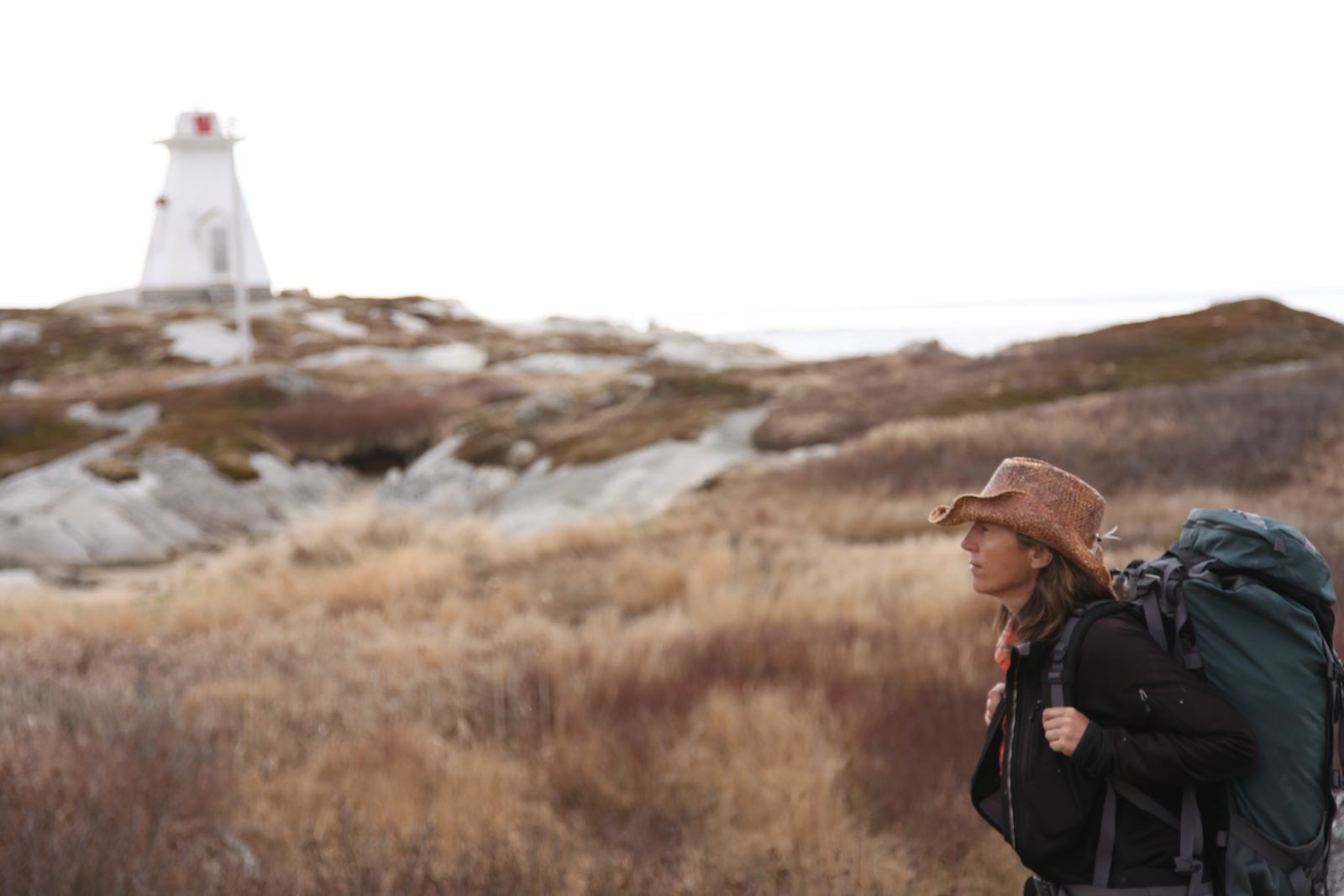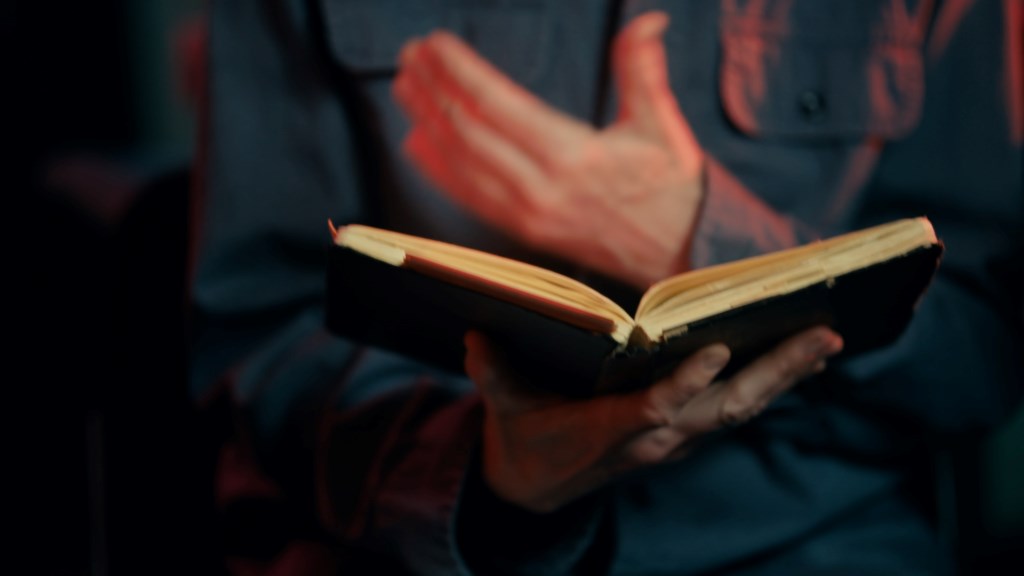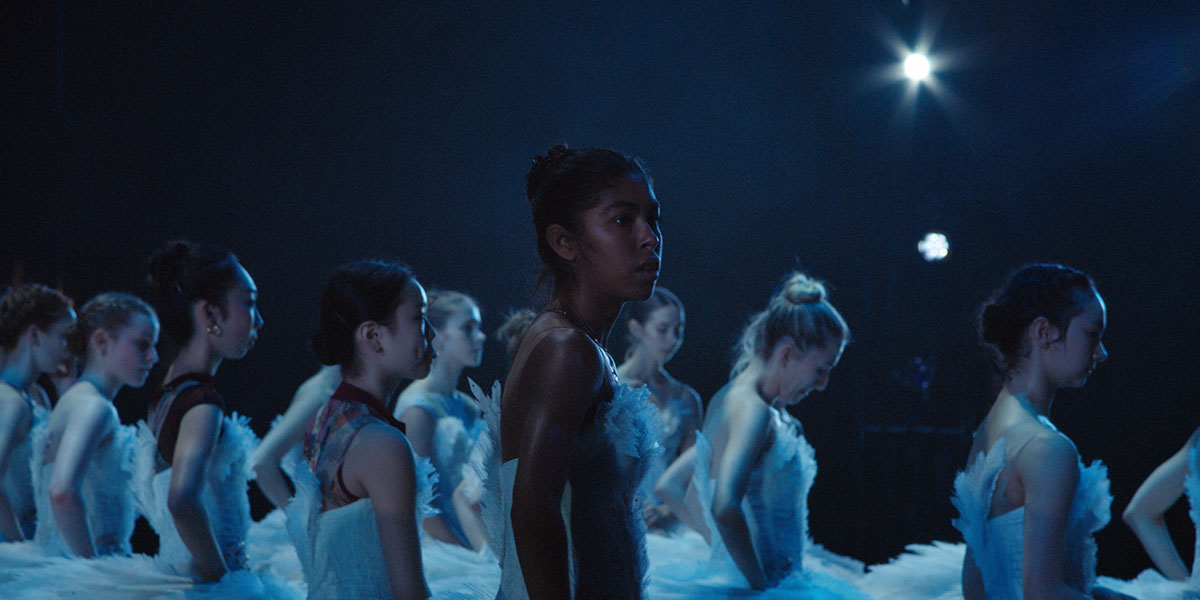“You have to be in the moment when you’re out in nature,” says 500 Days in the Wild director Dianne Whelan. “The minute you’re not is when you’re gonna get in trouble.”
Whelan knows something about surviving the elements. The director’s latest documentary is called 500 Days in the Wild, but the title sells her short. In actuality, Whelan spent a whopping 2224 days in the wild after embarking on the Trans Canada Trail on July 1st, 2015. The film chronicles a multi-year odyssey in which Whelan became the first person to traverse the Trans Canada Trail in its entirety—24,000 KM of trails and waterways from Newfoundland to the Northwest Territories before landing home on the coast of British Columbia.
The years-in-the-making part of 500 Days in the Wild is a key detail of Whelan’s endurance: in the film, she admits that she expected the project to take about a year. It takes her a week to traverse some stretches that she expected to cross in a day. Cold Canadian winters, rough storms, and equipment woes ensure that it’s the ultimate challenge of the Canadian wilderness—but also one of the spirit.
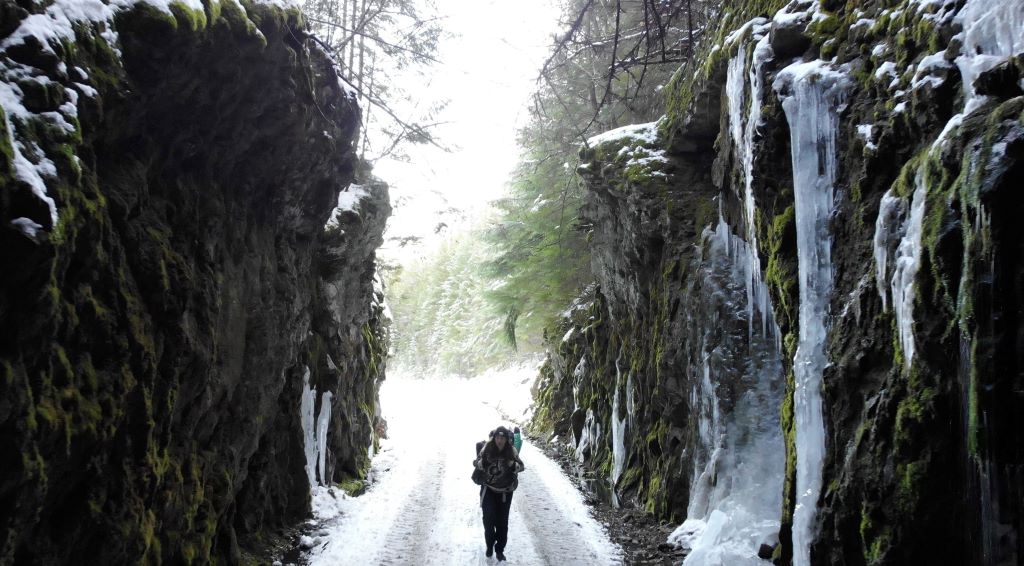
Whelan, speaking with POV via Zoom from Berlin, says the longitudinal nature of the documentary didn’t faze her. Nor did it change her motivation for doing it in the first place. “First and foremost, I’m a filmmaker. I’ve made a film on Everest and I’ve made a film on the most northern coastline in Canada, so making a film on the longest trail in the world didn’t seem like that far of a stretch conceptually,” says Whelan.
“The difference being on those other journeys, I was following people on their attempts. In this case, I’m the character on the journey. That, of course, is a drastically different thing: I’m not only on the journey, but I’m trying to film the journey. That was the big shift for me, but it seemed like the natural thing to do.”
As Whelan says in the film, the journey offered a moment for self-reflection: “checking out to check in,” she likes to say. The film invites audiences to take a cue from Dianne and slow down and take stock of one’s surroundings and one’s place in the world.
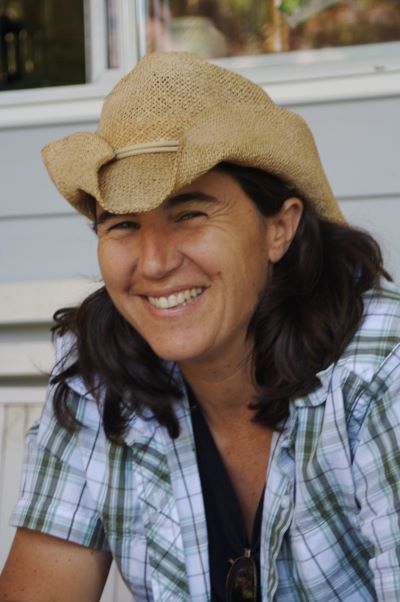
“The whole journey became about connection: connection to the land, connection to the water, connection to other people, connection to community,” notes Whelan. “That’s the healing arc of the journey.”
Whelan says that while the trek looks daunting, her background making independent films prepared her for the long haul. “On Everest, we had 40 days. It was just me and one DOP, so we had 40 days to get the film in the can because the climbing season is really that long,” explains Whelan. “In this case, I had a lot more room to breathe.” But she adds that spending time in the outdoors her adult life, doing outdoor education programs like Outward Bound since 18 and gradually embracing new terrains in her filmmaking, prepared her for the mental and physical challenge.
“Once I got into filmmaking, I started in the Arctic and then went to Everest, so my confidence level went up,” observes Whelan, likening the process to training in a gym. “My films begin as independent films, so they’re self-financed. I just go out there with my camera and away we go. You gain confidence when you go on these journeys and then you come back and the film gets made and released, and that muscle gets stronger. The preparation for this journey was everything that I’d been through on my life before I began it.”
Beyond the personal and geographical adventure of Whelan’s expedition, 500 Days in the Wild lets the independent filmmaker confront what it means to work solo and when to join forces with a team. Helping hands and adventurous friends join Whelan throughout her journey. Some hike or paddle with her for a stretch of the trail, while others chicken out when faced with the elements. Others come and go with equipment and supplies at meet-up spots.
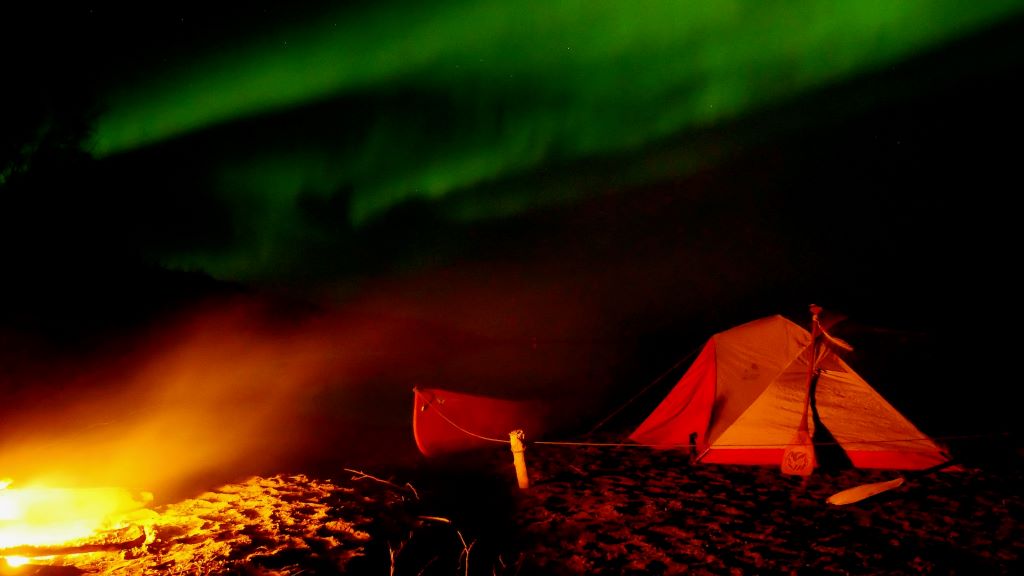
Whelan says that navigating the personal and collaborative nature of 500 Days of the Wild was part of the adventure. These collaborations evolved as the project grew with an ongoing blog keeping friends and readers up to date.
“I worked with another filmmaker in Halifax named Ann Verrall for the first few years. I hired Anne for three days, and then she’s like, ‘This poor woman: She really needs my help,’” laughs Whelan. “Out of the kindness of her heart, she stepped in and really started helping me out in those first few years. On the trail, she would meet me on a shoreline somewhere and we would do grant applications, and we were successful in some of those.”
But living off the grid for six years requires an independent filmmaker’s ability to stretch every dollar just as much as it tasks one to get the right shots solo. Whelan says she made the film on $20,000 a year up front, and then recognised that she needed more partners as the project and the potential for its reach grew.
She says that one key step was recruiting producers Betsy Carson and Christine Haebler. “I chose women that I knew would support both the art and would guide me through the business. They supported my creative decisions a hundred percent through post-production.” The team drew the interest of distributor Elevation Picture and Paramount+ for streaming at a later date—both notable gets in a market that isn’t especially kind to independent documentaries at the moment.
“I can’t emphasize the importance of choosing your team very cautiously,” says Whelan. “I worked with an incredible editor. In documentary, the editor is the most important creative relationship that I have.” Working with film editor Tanya Maryniak and a quartet of editors in Montreal and Vancouver, the film draws from over 800 hours of footage.
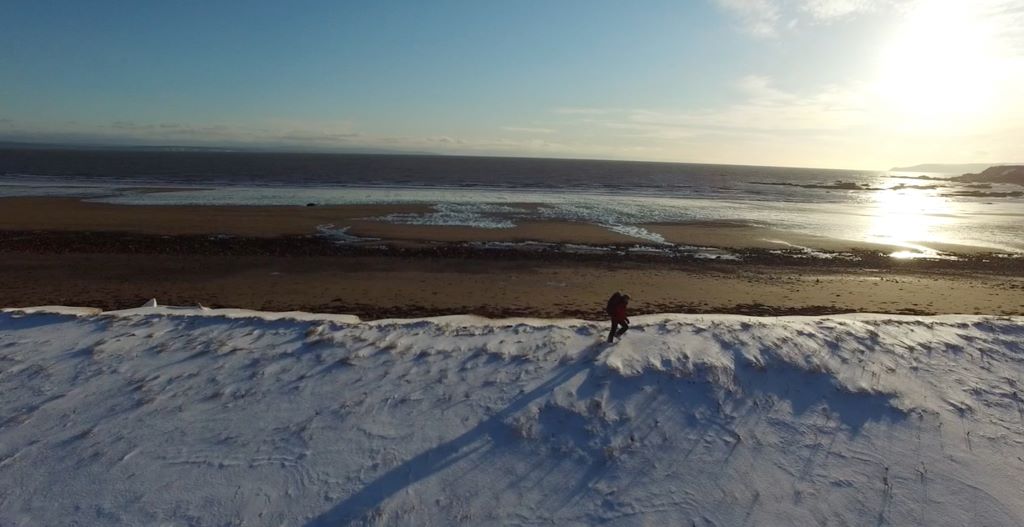
Whelan says that editing and shaping the feature within a year was an adventure of its own. “We really had to tackle this project like we were cutting a series. Lots of assemblies were made, and then Tanya and I swung in and we took the scenes that we wanted to weave from that,” says Whelan. “But there were definitely times when I locked us in a hotel room with 800 sticky pads on the wall. That’s how we found our arcs and weaved the different themes in this film.”
Distilling 800 hours of a six-year journey into a two-hour film inevitably means some tough decisions. 500 Days in the Wild chooses its locations carefully as Whelan moves westward to travel with the sun and to end her journey by arriving home. Long stretches of the film soak up the beauty of the Maritimes while giving Whelan a wake-up call that she’s going to need to clear her schedule. Then quicker passages zip by Montreal and boring old Toronto, allowing the film to really breathe when Whelan arrives at Lake Superior.
There on the water, the film finds a thrilling episode in which Whelan paddles solo along the deep, cold, and unforgiving lake. She navigates long stretches in the dark, surviving by skill, luck, and attentive listening to the water. Another longer act shows what happens when cold Canadian winter rears its ugly head and Whelan has to call in the cavalry (re: her friend Jenica) to help her portage a canoe while hacking away at ice and overgrown brush with a small axe. The film finds key moments that lend emotional beats and transformative moments, but also share enduring friendships through which the journey is a success.
Whelan adds that she knew immediately that certain moments, especially unexpected ones, could convey the core of the story, like one scene in which she whispers to a frog, her first real companion along the way. “It’s very much through the female gaze and my connection to the Earth as a mother,” observes Whelan. “A quiet radical element of the film actually is showing a very different explanation of the sacred.”
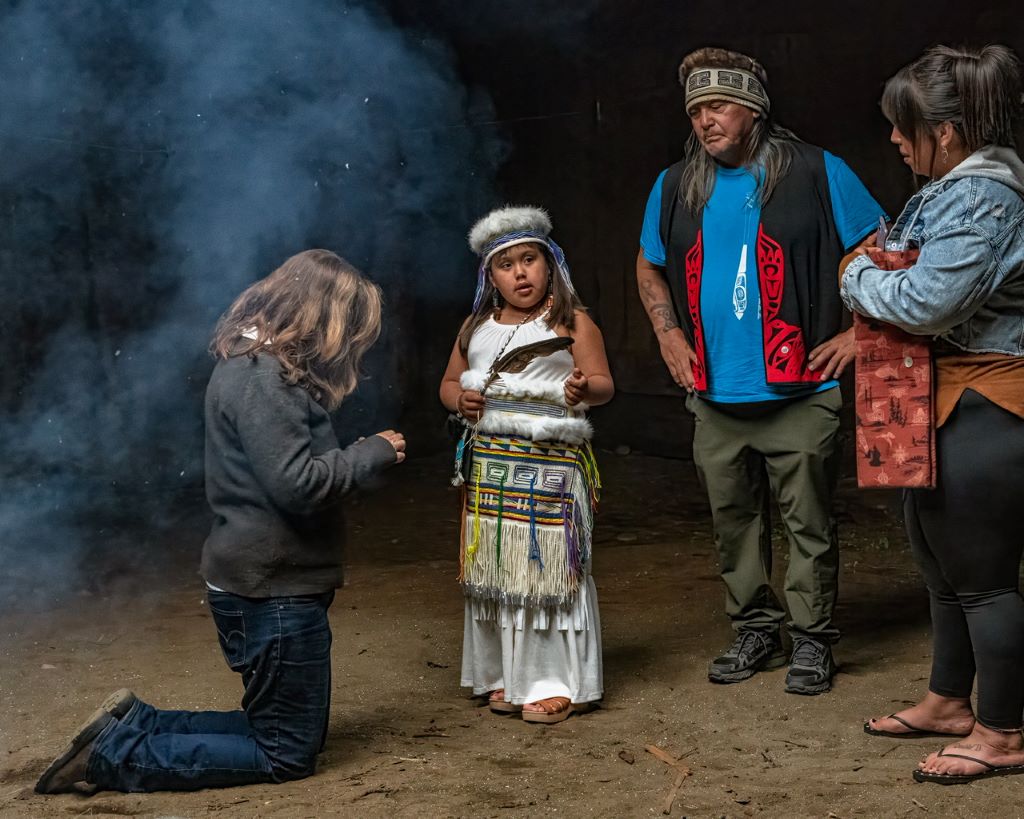
500 Days in the Wild conveys the sacred nature of the wilderness by paying homage to the diverse Indigenous communities whose lands and stories intersect with Whelan’s journey. Whelan says that after showing a film on Haida Gwaii, she received a gift from Raven clan healer Vern Williams that guided her journey: an eagle feather. The blessing appears in the film and Whelan carries the gift across the Trans Canada Trail. The feather it doubles as a companion, keeping her afloat throughout the expedition.
“One of the lessons in hindsight is that what we carry in our heart shapes our journey,” says Whelan. “The very fact that I carried that feather, that I honoured feather, that I respected that feather was something I carried in me.”
Other encounters with Indigenous groups happen by chance as people learn of this woman wandering and paddling the woods alone, braving a path few people in their own community had travelled. “I set out on the journey thinking that the old way is that I’m not going to have a motor,” says Whelan. “Then here I am four months into the journey and I’m spending time in the Mi’kmaq communities. I’m being taught that the ‘old way’ isn’t the method. It’s what you carry in your heart on your journey. They told me ‘our ancestors made journeys like this and travelled thousands of kilometres for years.’ The way they did it was, with every step on the land, to say, ‘The earth is sacred.’ With every stroke of your paddle on the water, you say, ‘The water is sacred.’
“They said if you do that, you’ll be safe. And I listened.” Whelan says that by listening to the land and the elements, she overcame fear along the way, noting she grew to appreciate the play on words of Velcrow Ripper’s documentary Scared Sacred. “Listening and learning saved me more than my GPS or my water bottle.”
Whelan notes that this connection to the earth illustrates the female gaze of the film, which is also evident in the way that perceived setbacks along the route ultimately become strengths. “I love Free Solo, but I’m not an extreme athlete,” says Whelan, “and most of the times, we set a goal and we see any diversion from that as a failure. I adapt.”
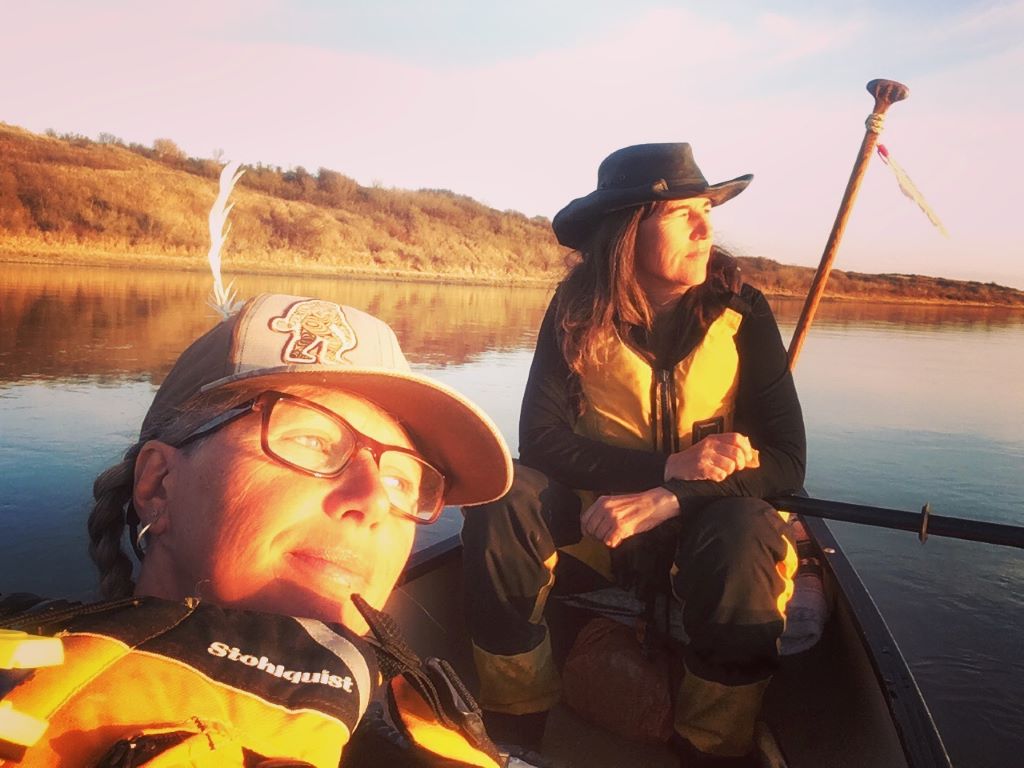
Part of the film’s portrait of personal growth comes when Whelan recognizes that she can’t do it alone. She recognizes that knowing when to ask for help isn’t a sign of weakness, but of strength. “What makes this film different from most adventure films is the fallacy of being alone out there,” she notes. “I go out there thinking that [it will be fine], but I need help from day one.” Whelan adds that the presumption of isolation in nature is a myth. Surrounded by friends, animals, trees, and flowers, she never seems alone.
Moreover, this theme that no journey is made in isolation fuels the final act of the film when Whelan’s friend, Louisa, joins her on an epic paddle across Great Slave Lake in the Northwest Territories. 500 Days in the Wild finds a beautiful love story as Whelan and Louisa brave the elements, fight off some bears together, and grow closer in the process. When the COVID-19 pandemic kicks in and Whelan can’t connect with peers across the journey, Louisa pulls up in a van and accompanies her for the home stretch. It’s another part of the journey that Whelan hadn’t planned, but had to include. “It happened: a relationship began on this journey and I had to be true to that,” she explains.
It’s a touching love story, but also a refreshing way in which 500 Days in the Wild subtly expands the canon of queer cinema. Whelan notes that all the friends on her journey are queer, but that the film doesn’t need to signpost things. Instead, it’s a rare example of a film that combines the great outdoors and challenges of physical and mental skill with members of the queer community where acceptance and coming out aren’t part of the story. Put another way, Whelan offers something of the sacred in the space that she shares. Friends challenge themselves in an open environment where people are free to explore their own strengths.
“Politics doesn’t matter when you’re out on a trail,” notes Whelan. “What matters isn’t what makes us different. What matters is what connects us and what we share. It doesn’t matter what your belief systems are when you meet on a trail. What you do have in common is that you’re both on this trail and you might not have seen very many people. When there are fewer people, people are more likely to engage with one another. This whole journey is stitched together from thousands of acts of kindness.”




